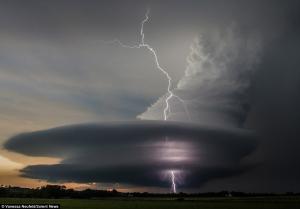Hello,
Looking for information in USD on what it will take to setup a receiving/broadcast station in terms of terrain requirements. I'm in a 2 story home with little room for detecting antenna (and I see there are choices available), but wonder if height over other homes, trees, hills makes any difference.
In order for me to join in on this audacious project, (read that as fun), I have to pass some criteria.
Primary one is due to lean times, affordability of a detector. I am versed in assembling electronics as I go back to numerous projects with the name Heathkit on them. So now some of you know my age 8^) Therefore if best pricing requires assembly, no issues.
Second obstacle is a basic understanding of connectivity needs. I have a multi-port cable modem, but only one computer which is owned by my employer. Not sure if the computer is required to act as an interface for this to work. Can do so, but would limit provision of strike reports to when the computer is in use, (approx 14hrs/day).
Third obstacle which has the most weight is the house spouse. She will not want exposed antenna duct taped to a window like pressed ham on glass, or wires visibly connecting part a to b, to c, etc.
I have been a super fan of electrical storms since I was born - almost struck twice, to the point of feeling the pre-hit warnings. Just love mother nature during furious moments, and stumbling upon this site and it's detection map make me one happy fella. With this, I would like to eventually become a provider of lightning strikes with detection from New Hampshire, USA. I'd be the only one from NH.

Any insights of obtaining a strike detection kit to the basics of connection and hints on how to hide antennae would be most appreciated.
Looking for information in USD on what it will take to setup a receiving/broadcast station in terms of terrain requirements. I'm in a 2 story home with little room for detecting antenna (and I see there are choices available), but wonder if height over other homes, trees, hills makes any difference.
In order for me to join in on this audacious project, (read that as fun), I have to pass some criteria.
Primary one is due to lean times, affordability of a detector. I am versed in assembling electronics as I go back to numerous projects with the name Heathkit on them. So now some of you know my age 8^) Therefore if best pricing requires assembly, no issues.
Second obstacle is a basic understanding of connectivity needs. I have a multi-port cable modem, but only one computer which is owned by my employer. Not sure if the computer is required to act as an interface for this to work. Can do so, but would limit provision of strike reports to when the computer is in use, (approx 14hrs/day).
Third obstacle which has the most weight is the house spouse. She will not want exposed antenna duct taped to a window like pressed ham on glass, or wires visibly connecting part a to b, to c, etc.
I have been a super fan of electrical storms since I was born - almost struck twice, to the point of feeling the pre-hit warnings. Just love mother nature during furious moments, and stumbling upon this site and it's detection map make me one happy fella. With this, I would like to eventually become a provider of lightning strikes with detection from New Hampshire, USA. I'd be the only one from NH.
Any insights of obtaining a strike detection kit to the basics of connection and hints on how to hide antennae would be most appreciated.



